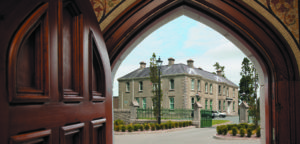ST. PATRICK’S CHURCH, DUNDALK
GOOD FRIDAY – 22 APRIL 2011
HOMILY BY
CARDINAL SEÁN BRADY
It is good for us to be here on this Good Friday afternoon. We have come to pray – in horror and amazement – we pray in the company of others and in thanks. We pray in horror today at the thought of the terrible sufferings of Jesus, which he endured then and which continue in his people to this day!
We pray in amazement that this suffering was caused to Jesus quite deliberately by other men and women. We should be angry that this suffering is being caused today by others to millions throughout the world. We think of all those who suffered with Jesus – his mother Mary and his beloved disciples and the other women – his followers. We think of Veronica who saw that Jesus needed help and she was courageous enough to offer it.
We all need help:
• Doctors and nurses – when we are ill;
• Counsellors and confessors – when we are confused and contrite;
• Social Workers – to help at other times;
• Parents and family and friends – to console us in hard times.
We all depend on others from the start to finish of life and Jesus was no different. Today, above all, we pray in thanks for what Jesus has suffered and done for us. Each of the three Readings makes it clear that Jesus suffered and died, for love of us.
Listen again to the prophet Isaiah, foretelling the coming of Christ:
“A man of sorrows and familiar with suffering he was despised and we took no account of him. And yet ours were the sufferings he bore, ours the sorrow he carried. He was pierced through for our faith. Crushed for our sins. On him lies a punishment that brings us peace and through His words we are healed. We had all gone astray like sheep each one taking his own way, and the Lord burdened him with the sins of the all of us”.
Today we pray in thanks for all those who still give their lives to improve and save the lives of their fellowmen and women.
The Gospel just read began with the arrival of Judas, the Traitor, and his companions. They had been sent by the Chief Priests and the Pharisees to look for Jesus the Nazarene.
St John’s account of the Passion has been compared to a drama in five acts.
1. The first act is set in Gethsemane – its special theme is the betrayal of Judas. The central action is Peter’s blow with the sword and the significant declaration is that of Jesus I am he.
2. The second Act is set in the House of Anna, father-in-law of Caiaphas – the High Priest. Here the special theme is the defection of Peter. The central action is the slap which one of the guards gave Jesus in the face. But the significant declaration is Peter’s double denial of Jesus which was the real slap in the face for Jesus from his beloved disciple.
3. The third act is set before Pilate the Roman Governor – the real boss. Its central theme is that Pilate, the soldiers and the Jews, unknowingly proclaim Jesus king. Here the central action is the crowing with thorns and the putting on of the purple robe. The significant declarations are those of Christ: “My kingdom does not belong to this world” and Pilate’s quest to the Jews: Do you want me to set free for you the King of the Jews? And Pilate’s statement to the Jews when Jesus came out wearing the crown of thorns and the purple robe: “Look! Here is the man” and the remarks of Jesus – “You have authority over me only because it was given to you by God”.
4. The fourth act is set on Calvary. Its special theme is the crucifixion. The central action took place when one of the soldiers plunged his spear into the side of Jesus. Here the important dialogue is that between Jesus and his mother. He is your son – she is your mother.
5. The fifth and final act is set at the tomb. Here the central action is the anointing of the dead body of Jesus – with about one hundred pounds of spices. The special theme of this fifth act is the reversal of all that had happened in the first act.
Jesus carried his cross to Calvary. Now he is carried to the garden that was in the place where he had been put to death and in it there was a new tomb. There Jesus was embalmed and shrouded as he had been stripped in the fourth act. The body of Jesus is placed in the tomb as he was nailed to the cross in the fourth act.
In the words of Christ: ‘We need to pray’. We are going to pray for lots of people and rightly so. Pray for ourselves and those dear to us. Our crucified Lord became obedient until death. We ask him to keep us faithful especially in the dark days of our lives. He was scorned by the people. We ask him to teach us the way of humility.
May we all get great consolation from the words of Jesus on the cross. “Father, forgive them for they know not what they do” and his marvellous promise to the good thief: ‘This day you will be with me in Paradise.
He laid down his life for his friends. May we love one another as he loved us. He stretched out his arms on the cross to include people of all nations and all ages. May he gather all God’s scattered children into his kingdom.
We are left with two questions which each one of us must try and answer for ourselves:
1. Who do you say that Jesus is?
2. If you had been present in Jerusalem on that Good Friday, are we all quite certain where we would have been standing – with Mary and John at the foot of the cross – or with Peter and the others?
If we want to stand with Mary and John, what do we need to do today?



You must be logged in to post a comment.